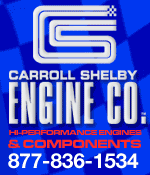Well over the last few days I've done a fair bit of research on EFI's especially self learning ones !
I have taken all comments on board, and seriously given them all consideration.
My plan is to use all the factory hardware except the ECU-which is a seriously good bit of kit but has limitations as far as blokes like us go. Any mods that you need to make tuning wise or delete wise seems to cost heaps and you're tied to an SCT tuner pretty much.
That being said I found this post on a forum which should/will (well maybe !!) clear up some perceived issues......possibly, maybe or maybe not.........or just don't give a tinkers toss

Here is some information that I think would be helpful to anyone shopping for an aftermarket EFI system.
All Self Learning aftermarket EFI systems use manifold vacuum as a measure of engine load. This is measured by the MAP sensor. Manifold Vacuum on a running engine has an inverse relationship to the load that the engine is under. At a given engine speed, as the load is increased, the vacuum goes down.
At Wide Open Throttle, the vacuum (or pressure) inside the manifold is roughly zero. At that point, the vacuum or pressure inside the manifold is equal to the atmospheric pressure (No vacuum, and no pressure).
At Idle, when the throttle plates are closed, there is some vacuum present in the manifold because the downward movement of the pistoms is sucking against the backside of the closed throttle plates.
Anything that puts load on the engine will decrease this vacuum. For Instance, it you had a vacuum gauge connected to the intake manifold of an idling engine, and the A/C compressor comes on, even if the engine RPM stays steady, the vacuum will drop.
Manifold vacuum is an excellent reference for engine load!
Engines with long overlap camshafts and/or low compression and/or small displacement can make low vacuum at idle. This is why vacuum assist power brakes are not reccomended in these applications.
The total range for vacuum in our atmosphere is from zero (atmospheric pressure) to 30 inches of vacuum (high vacuum). Most stock or moderately cammed engines will generate 15 - 20 inches of vacuum. An engine with a long overlap cam can make as little as 2-4 inches of vacuum.
The issue with an engine that makes less than 7 inches of vacuum is that when the ECU is trying to measure load, it only has a vacuum range of 7 inches or less from idle to wide open because the idle vacuum is very close to the wide open vacuum. This senario tells the ECU that the engine is almost at full load when in fact it is idling. Because the ECU is told that the engine is at full load, guess what it does? It throws a bunch of fuel at it to handle the reported high load.
For a Self Learning EFI system (any brand!) to work properly, the engine needs to produce a bare minimum of 7" of vacuum at a warm, in park idle. I would prefer that the engine makes 10" just for added margin of error.
If you have an existing running engine that you are considering converting to EFI, you can simply connect a vacuum gauge to it and see how much vacuum it is making. If this is a new build, consult with an engine building professional or your camshaft manufacturer with all your engine specs and ask them to make a camshaft reccomendation that will produce a minimum of 10" of vacuum at idle. Bear in mind that a lot of factors come into play concerning the production of manifold vacuum. Engine displacement, compression ratio, how well the rings and valves are sealing, Camshaft duration, Camshaft lobe separation, idle ignition timing, idle fuel mixture, intake manifold and intake port design, efficiency of the exhaust system, all play a part in manifold vacuum.
With a laptop tunable system like the XFI Sportsman or XFI 2.0, you have the ability to re-scale the tables in the system to get back the load resolution lost by the idle vacuum, but this does require some tuning experience, or a willingness to learn about tuning.
If you are looking to purchase a Self Learning EFI system, please have a conversation with the dealer or retailer that you are considering purchasing from. If you are an installer or dealer of EFI systems, please have this conversation with your customer before the sale. This will help ensure that the end user gets the best system for his or her application.













 2Likes
2Likes







 Hybrid Mode
Hybrid Mode


